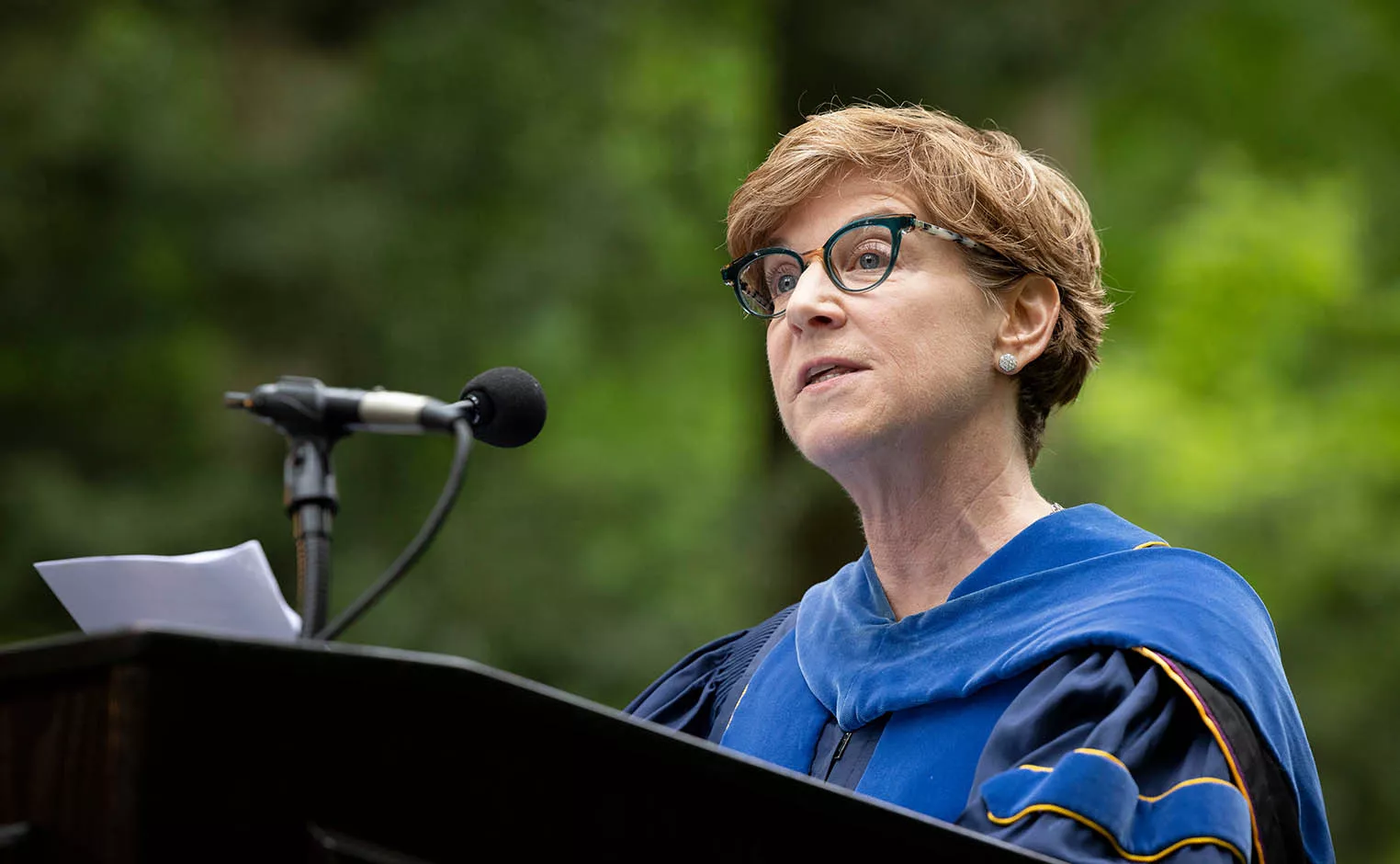Associate Professor of Art History Patricia Reilly's Introduction of Tom Stephenson

Good afternoon, everyone, it is great to be here with you on this lovely afternoon.
It is a pleasure and an honor to introduce Tom Stephenson, the James H. Hammons Professor of Chemistry. I have had the pleasure and the privilege of working with Tom in two contexts: in his role as an extraordinary teacher, when we twice co-taught Painting, Chemistry, and Conservation, and in his role as an exemplary institutional leader, when he was provost of the College and I worked with him as associate provost.
Before explore Tom’s contributions in these two areas, a little background. Tom arrived at the College in 1985, having received his Ph.D. from the University of Chicago, and coming fresh from a postdoctoral fellowship at Stanford University. For the next 38 years he inspired and supported generations of Swarthmore students. He taught courses in General Chemistry, Physical Chemistry, Quantum Chemistry, And in his field of specialty, spectroscopy: the branch of science concerned with the investigation and measurement of spectra produced when matter interacts with, or emits, electro-magnetic radiation.
In this capacity Tom supervised dozens of students in their research, which for many took the form of Honors theses. And he produced publications too numerous to mention, almost half of which were co-authored by the students he mentored.
In 2011 Tom’s career trajectory took a turn and he stepped into the role of provost, the chief academic officer of the College. This was a stroke of good luck for us. Swarthmore benefited greatly from his exemplary service.
Tom accomplished a stunning amount, the most obvious from a student perspective, I imagine, being his spearheading of the strategic planning process that resulted in the Campus Master Plan. The results can be seen all around us in the incredible new facilities we now enjoy: the Science Center, the new dorms, Singer Hall, new Sharples, and the soon-to-be completed student center.
This was a formidable task. I doubt anyone BUT Tom could have managed this project, juggling all of the moving pieces such as conferring with the students and faculty on what they wanted to see in a refigured and expanded campus, presenting to the Board, collaborating with the administration, and working with the architects, engineers, and the team in Facilities to make it all happen. It really was a logistical, intellectual, social, and cultural puzzle which Tom deftly pieced together into a whole.
Throughout this and his entire tenure as provost, Tom modeled restraint. He refrained from making assumptions when presented with information, a problem, or a request. Instead, he would ask: What are the facts? What is being stated here? What is being asked here? What are the College traditions, practices, or policies that apply here?
In other words, Tom subjected all information and requests to the same standards and the same processes of analysis. And this, along with so many other things, demonstrated his deep sense of integrity and his commitment to the College.
But what I really want to talk about is teaching with Tom. Now, I am an art historian and my knowledge of chemistry was — and really continues to be — modest.
As many of you know, twice during the four years you have been here, he and I have co-taught a course entitled Painting, Chemistry and Conservation. For the most recent version of this course, there was a waiting list of 35 students.
When I first proposed this course to Tom, he in his inimitable way sat back in his chair, arms behind his head, and responded with, “Well, I need to think about that.”
But truly, he was game, and after conferring with his wonderful colleagues in Chemistry, who were willing to let him take on this course despite the enrollment pressures in the department, he set out on this adventure.
We both had a lot to learn, but Tom was enthusiastic about doing so — eager to learn about areas of his field that he had not studied before, and eager to respond to the student enthusiasm for the field of conservation.
Throughout the course, Tom modeled for the students, and for me, a willingness to take risks, a respect for disciplines and methods outside own’s own, and an enthusiasm for engaging in interdisciplinary pursuit in the truest sense of the word.
There are many memorable moments for me from this course, such as listening to Tom’s conversations with the scientists at the state of the art conservation labs we visited at Winterthur, the Philadelphia Museum of Art, and the Barnes Foundation; or listening to him guide our extraordinary students on their final research projects.
But I think the experience that made the biggest impression on me is when Tom put on his goggles, rolled up his lab-coat sleeves, and jumped in with the students to make a fresco from scratch in the lab. Created the pigments, ground, and plaster. I can still picture the huge smile on his face as he proudly held up the wonderful, very unique, fresco that he produced.
In sum, we here at Swarthmore have been so fortunate to have Tom’s wisdom, dedication, and leadership in our lives. We will miss him and the sense of curiosity and humor that are his trademarks.
Class of 2023, parents, families and friends, I give you Tom Stephenson.



